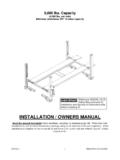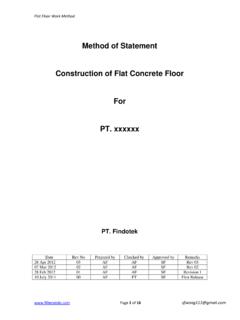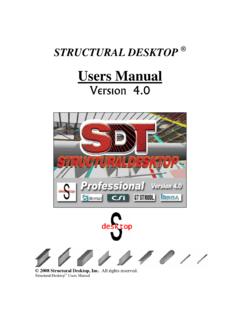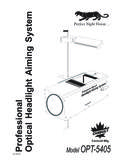Transcription of Altar Guild Manual - Diocese of the Northeast | …
1 Altar Guild Manual Adapted from the booklet Altar Guild Notes, by Constance Murray Ribble, 1952. Reprinted under the auspices of . The Orthodox Anglican Communion 2002. 1. A Prayer For use when serving at the Altar : GRANT, O Lord, we beseech Thee, that we may handle holy things with reverence and godly fear, and perform our work with such faithfulness and devotion that it may rise with acceptance before Thee and obtain Thy blessing; through Jesus Christ our Lord. Amen. Duties Following is a list of duties that the Altar Guild member performs when on duty: I. (When the service is Morning or Evening Prayer): 1. Dust the Chancel and see that the floor is clean.
2 2. Arrange the flowers in the vases on the re-table. (Don't have too many or have them too tightly arranged in the vases.). 3. Be sure the hangings are the proper seasonal color. 4. Place the Fair Linen on the Altar . See that it is absolutely clean. 5. Find the lessons in the Old and New Testaments. 6. Place the Alms Basons on the Credence table never on the Altar . II. (When the service is the Holy Communion): 1. Dust the Chancel and see that the floor is clean. 2. Arrange flowers as for Morning or Evening Prayer. 3. Have the proper seasonal colors in the Church. 4. Place the Alms Basons on the Credence table, preferably on the underneath shelf.
3 (If you do not have a double shelf, it is better to get a small stool and set the Alms Basons on that rather than to put them on the Altar .). 5. Have the priest's surplice clean and pressed, laid out with the proper stole in his vesting room. The Book of Common Prayer always distinguishes between the priest, minister, and Bishop A lay reader can be a minister, for instance, or a deacon. All priests are ministers but not all ministers are priests. Read the rubrics! 6. Find the proper day in the Altar Book. 2. 7. Put the water, wafers and wine on the Credence table. DO. NOT COVER WITH A CLOTH. 8. If candles are used, see that they are clean and free from excess wax.
4 Candle wax is easily removed by pouring boiling water on the brass and then rubbing immediately with old newspapers. This should be done out-of-doors or the wax will stop up the plumbing. NEVER TRY TO FORCE WAX OFF. WITH AN INSTRUMENT, IT WILL ONLY SCRATCH THE. BRASS OR SILVER. It is a good plan to use bobeches they protect the candlestick and the linen and are very inexpensive from Meunch-Kruezer, Syracuse, New York. They are something like six for a dollar. They are little round guards that go around the candle at the base of the candle and catch any drip. The Chalice with the puificator folded over the top. Next comes the paten.
5 Vested Vessels 1. Chalice 2. Purificator 3. Paten (place Priest's wafer in this if used). 4. Pall 5. Chalice Veil (same material as the hangings). The Burse (containing extra purificators and Post-Communion Veil) is set on top of the veiled vessels . 9. Put hymn numbers up and name of Sunday if you have the set. 10. Be sure the silver is immaculately clean, not a spot on it anywhere. Use glass wax. 11. Be sure the linens are perfectly fresh and well laundered. 12. Lastly, vest the vessels on the Altar . (See diagrams.). 3. The Chalice with the paten placed over the purificator. If a large Priest's wafer is used, place in the paten.
6 The Chalice, purificator and paten covered with the pall. Next comes the Chalice Veil and the Burse, as shown in the lower diagram. Rear view of vested vessels when Chalice Veil is not completely unfolded. The Burse, containing the white post-communion veil and extra purificators is now ready to be placed on top and the vessels will be ready for the service of Holy Communion or the Lord's Supper. The Chalice Veil can be completely unfolded if desired, but some Priests prefer it as shown in the diagram as it is more easily removed. 4. A Plain Altar 1. Put on the fair linen. 2. Place corporal on the Altar , letting it come just to the edge or perhaps a fraction over the edge, say inch.
7 (Some priests prefer to place the corporal on themselves. It should then be placed in the burse with the other linen.). 3. Set the chalice in the center of the corporal. 4. Place a purificator over the Chalice. 5. Put the paten (bread plate). on the Chalice over the purificator. 6. If a priest's wafer is used, (a large wafer) put one in the paten. 7. Over this place the pall. 8. Cover this with Chalice veil. 9. On this, place the burse containing the extra purificators and the post-communion veil 10. Be sure there is sufficient wine in the flagon or cruet on the credence table. 11 Put a cruet of water on the credence table.
8 12. Place the bread box containing the wafers or bread on the credence table. 13. Have a plain linen cover on the credence table itself. It may hang down slightly over either end, but not in front. DO NOT COVER THE ELEMENTS ON THE CREDENCE TABLE. 14. Find the lesson for the day in the Altar Book. This is most important. 15. See that the alms basons are available. If you do not have room on the credence table on the second shelf, then place the alms basons on a small stool or on the chancel step. Do not place them on the Altar . 5. Duties After Service I. (When Morning or Evening Prayer): 1. Remove flowers, wash the vases and put them away.
9 If heavy brass vases are used with liners, remove the liners and leave the vases on the re-table if you like. NEVER LEAVE. FLOWERS ON THE Altar AFTER A SERVICE AND NEVER LEAVE WATER IN. THE VASES. The flowers may be sent to the sick or shut-ins. but they should not be used just as a pretty bouquet in anyone's home. 2. Put the Alms Basons away, or leave them on the credence table if they are wood. The brass or silver ones should be put in flannel bags to keep them clean. 3. Take care that no dead leaves or flower petals are lying on the floor and that the Chancel is straight and clean. 4. Put the dust covers on the hangings, or put them away.
10 If put away, be sure that no folds come where there is embroidery and that the fringe isn't mussed in laying them away. II. (When the Holy Communion): 1. The same duties as above should be carried out with the addition of the following: Carefully remove the vessels to the workroom or sacristy. They should be rinsed and polished before putting away. If in the country where there is no water in the church, DO. NOT LEAVE THEM UNWASHED UNTIL LATER. TAKE THEM HOME AND WASH. THEM THOROUGHLY AND POLISH. This applies to everything that is used the chalice, paten, flagon or cruets. Any linens that may be even slightly soiled must be washed.






